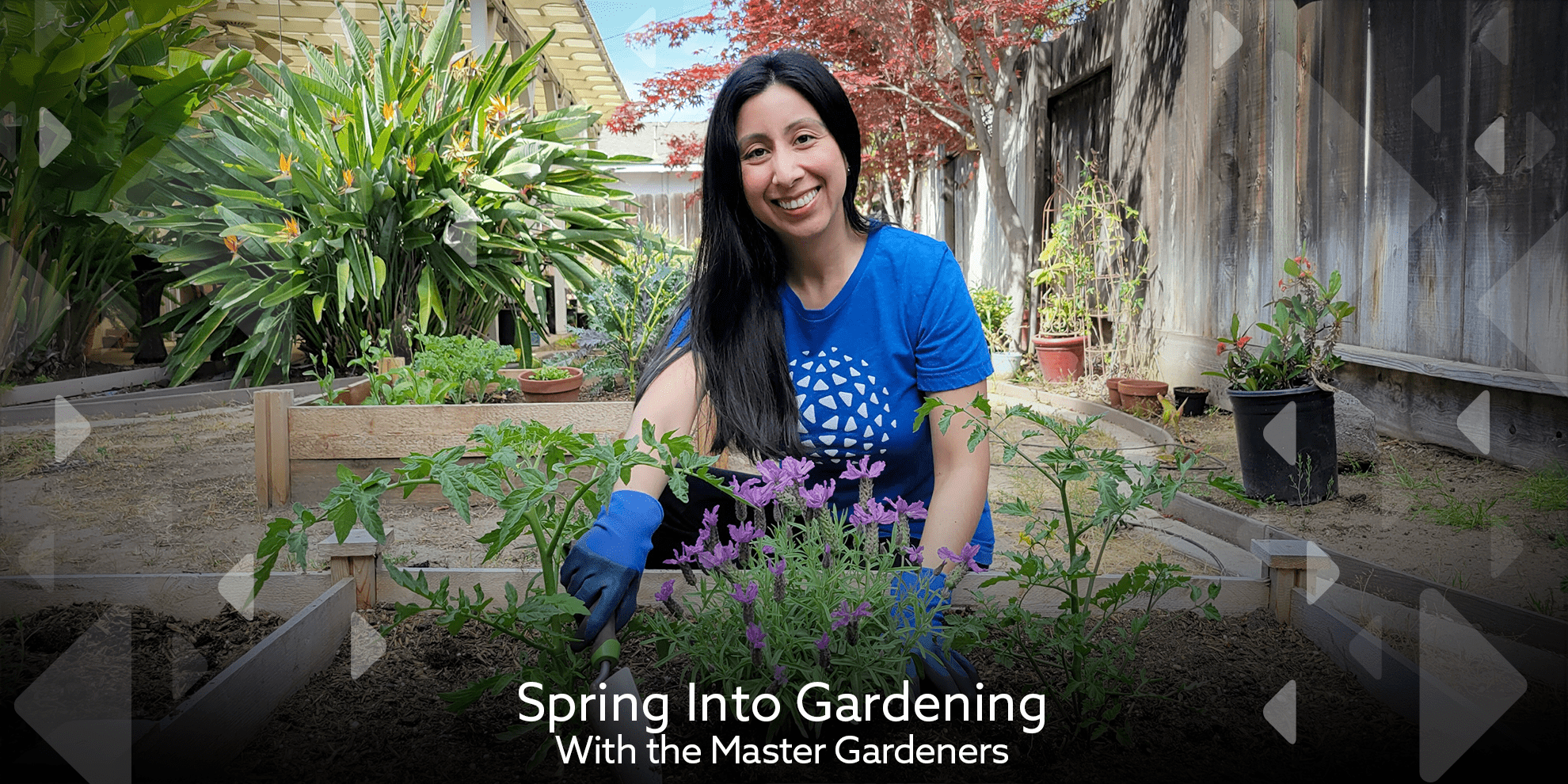 Spring has sprung! It’s that time of year in which our gardens start to bloom and the outdoors begin buzzing with life once more. Come join us as we welcome the change in seasons with our series of in person talks all about springtime gardening, featuring the Master Gardeners, opens a new window.
Spring has sprung! It’s that time of year in which our gardens start to bloom and the outdoors begin buzzing with life once more. Come join us as we welcome the change in seasons with our series of in person talks all about springtime gardening, featuring the Master Gardeners, opens a new window.
In these introductory classes, we will learn about a variety of topics, including how to set up butterfly and bee-friendly gardens, how to grow herbs and edible flowers, and how to start container gardening. These talks will additionally be accompanied by a seed swap! Bring your seeds and swap with your fellow enthusiasts to start growing your garden. Join us at a location near you!
Bees and Butterfly Gardens
Bees and butterflies are a vital part of our ecosystems, as they pollinate food supplies for both ourselves and for other animals, birds and insect life. Cultivating a bee and butterfly garden will bring them to your local area and provide them with a safe place to feed, rest and find mates. Native plants are particularly effective when it comes to supporting these little neighbors’ populations.
The best type of bee and butterfly gardens is simply any garden that has been mindfully filled with plants and flowers that attracts these insects. Anyone can transform their garden or backyard into a haven for bees and butterflies! Check out these titles to get started on yours:
Native Plant Gardening for Birds, Bees & Butterflies
How to Create A Wildlife Garden
The California Wildlife Habitat Garden
Herbs & Edible Flowers
There’s nothing quite like collecting herbs fresh from your garden to add flavor and aroma to your favorite foods. Spring is the best time to plant herbs in California, but herbs themselves are highly versatile. They can be planted out in your garden, spread throughout the landscape or even lined up in pots on a sunny shelf or window ledge. Some of the best types to try in pots include basil, oregano, rosemary and thyme.
And did you know? There are certain types of flowers that you can eat too! You may even have some already in your garden: from roses, calendula, pansies and violas; to marigolds, lavender, violets and nasturtium. Just a few different flowers can add a new experience of color and fragrance to both your gardens and your food dish.
Interested in learning more? Check these titles out!
Best Roses, Herbs, and Edible Flowers
Container Gardening
Even if you don’t have a traditional backyard, you can still cultivate your own garden with containers! Container gardening gives you more control over your growing, as you can pick up your pots and move them to wherever they will thrive. You can adjust the soil to make sure they’re getting the right amount of nutrients, and there are less if not no weeds to entangle with. One or two pots at the corner of your balcony or along the edge of your driveway is all you need to maximize your space and get growing!
Check out these titles if you’re interested in getting a jumpstart on your own container garden:
How to Garden Indoors and Grow your Own Food Year Round
Native Plants
Let’s explore the magic and beauty of California native plants together! Native plants are vital for our local pollinators and wildlife, and best of all, they're built to thrive in our California climate, so it’s beneficial to everyone when you add them to your garden. Whether it's in a container or a yard, planting natives will help save water, reduce maintenance and pesticide use and invite local native species to thrive alongside your Californian flowers, grasses and other native plants.
Want to learn more about California native plants and gardening? Check out these titles to get started!
The Drought-defying California Garden


Add a comment to: Spring Into Gardening With the Master Gardeners